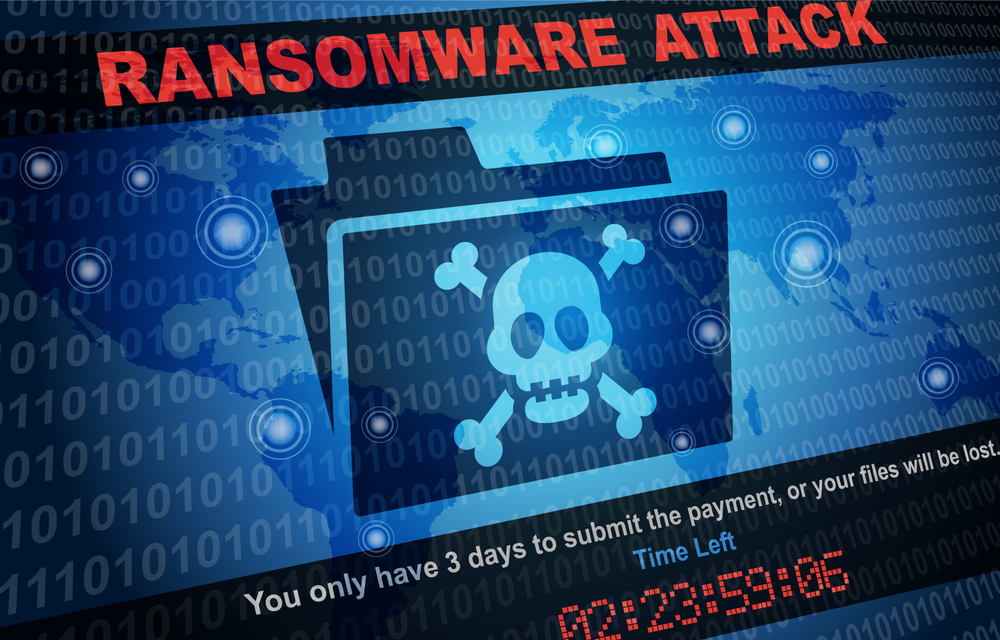
Businesses today face numerous cybersecurity threats, with ransomware attacks being one of the most pervasive and financially damaging. According to the latest estimates, the cost of cybercrime worldwide will reach $13.82 trillion by 2028.
As cybercriminals refine their techniques, organizations must take proactive measures to safeguard their assets and data. One crucial tool in mitigating risks and strengthening defenses is cybersecurity insurance.
In this blog post, we will explore the pivotal role of cybersecurity insurance in ransomware protection, covering topics such as insurance providers, the claims process, cost-benefit analysis and future trends.
Understanding ransomware attacks
Ransomware attacks are a type of cyberthreat where malicious actors exploit vulnerabilities in a company's security infrastructure to gain unauthorized access to its systems. Once inside, the attackers use sophisticated encryption algorithms to lock the organization out of its data. They then demand a ransom to restore access.
There are various types of ransomware, including:
Encryptors: Encrypts files on the victim's system, making them inaccessible until a ransom is paid for the decryption key.
Locker: Locks users out of their systems by preventing access to the operating system or essential functions.
Scareware: Displays fake ransom messages without actually encrypting any files, aiming to scare users into paying the ransom.
Doxware or leakware: Threatens to leak sensitive data if the ransom is not paid, putting additional pressure on victims to comply.
Some ransomware strains are known for their complexity, making them even more challenging to combat effectively. The consequences of ransomware attacks can be severe. Businesses that fall victim to these attacks may experience significant financial losses, reputational damage and legal liabilities. Sometimes, the impacts can be so devastating that organizations risk bankruptcy.

The need for cybersecurity insurance
As cybercriminals continuously develop attack techniques, traditional security measures are often insufficient to provide comprehensive protection against ransomware threats. This growing cybersecurity gap has highlighted the increasing need for specialized solutions, and cybersecurity insurance has emerged as a crucial aspect of a comprehensive defense strategy.
Traditional security measures, such as firewalls, antivirus software and intrusion detection systems undoubtedly play a crucial role in safeguarding businesses against cyberthreats. However, these measures have limitations in combatting ransomware attacks, as cybercriminals are becoming increasingly adept at bypassing or evading such defenses.
Many cyber insurance policies offer coverage options that address the unique challenges posed by ransomware attacks. These policies include provisions for data recovery, financial compensation for losses incurred during an attack and legal assistance to manage potential liabilities.
Cyber insurance can help create a comprehensive defense strategy by working in tandem with existing security measures. It acknowledges that no security system can guarantee absolute immunity from cyber threats and provides an essential backup plan when a breach occurs. Complementing security protocols strengthens the overall cybersecurity infrastructure.
Moreover, cyber insurance providers often offer additional resources to enhance a business's defenses. These resources may include incident response teams, forensic investigations and employee cybersecurity training. By leveraging these resources, companies can improve their incident response capabilities and better defend against ransomware threats.
Key features of cybersecurity insurance policies
Cybersecurity insurance policies include various essential aspects that tackle the specific challenges presented by cyberthreats. The following are some key features and coverage options typically found in cybersecurity insurance policies:
Data recovery coverage
Cyber insurance offers data recovery coverage to protect against the costs of recovering lost, damaged or compromised data from a cyber incident. This coverage includes expenses for data restoration, data reproduction and downtime.
Financial compensation
Cyber insurance can help organizations manage the financial impact of a ransomware attack or data breach. This is done through monetary reimbursement or payout to cover losses. The insurance policy compensates the insured party and can help offset the costs and liabilities incurred by cyber-related risks.
Legal assistance
Ransomware incidents can lead to complex legal implications — particularly concerning data breaches and potential privacy violations. Cybersecurity insurance policies often include provisions for legal support, helping businesses navigate the legal complexities and potential liabilities that may arise from a ransomware attack.
Public relations and reputational damage
A severe consequence of a ransomware attack is loss of customer trust and revenue. Cybersecurity insurance policies may include provisions for public relations efforts to manage reputational fallout. This coverage helps businesses implement damage control strategies, restore their reputation and regain customer confidence.
Incident response and forensic investigation
Many cybersecurity insurance policies offer access to incident response teams and forensic investigation services. These teams can promptly respond to an attack, contain the threat and conduct thorough investigations to understand the extent of the breach.
By working closely with cybersecurity insurance providers, businesses can customize their policies to address their needs and risk profiles. Tailored policies ensure that companies get the most comprehensive coverage possible, minimizing potential gaps in protection.
Assessing risk and determining coverage
Insurance providers evaluate the ransomware risk levels of businesses to determine appropriate coverage and premiums. This risk assessment process involves factors such as:
Identify critical assets
Determine the most critical assets that could be targeted in a ransomware attack, such as customer data, financial information, intellectual property and operational systems.
Evaluate security infrastructure
Conduct a comprehensive evaluation of the organization's existing security infrastructure. Identify potential weaknesses or gaps that may expose the business to ransomware threats.
Analyze past incidents
Review any past ransomware incidents or near misses to understand the organization's historical exposure to ransomware attacks and identify patterns or recurring vulnerabilities.
Stay informed about the threat landscape
Stay up to date on the evolving ransomware threat landscape, including new attack techniques, ransomware strains and industry-specific risks.
Conduct risk mitigation strategies
Implement risk mitigation strategies such as regular data backups, strong password policies, multifactor authentication and ongoing employee training on recognizing and reporting suspicious activities.
Engage cybersecurity experts
Consider seeking the expertise of cybersecurity professionals or consultants to conduct a comprehensive risk assessment and recommend tailored security measures.
After assessing ransomware risk levels, businesses can determine the appropriate level of cybersecurity insurance coverage. Insurers use several factors when determining coverage and premiums for cybersecurity insurance policies, including:
● Industry focus: Highly regulated sectors like financial services and healthcare are prime targets for cybercriminals due to sensitive data and potential regulatory penalties.
● Geographic variations: Cyber insurance premiums vary based on location, with different regions facing distinct cyberthreats.
● Proven security measures: Implementing robust cybersecurity measures lowers risk and leads to more competitive premiums.
Cybersecurity insurance and incident response
Cybersecurity insurance can be crucial in facilitating an effective incident response strategy. It ensures businesses have the financial resources to respond promptly to attacks and recover their operations with minimal disruption.
An incident response plan should outline roles and responsibilities, planning and communication protocols and steps to contain and eradicate threats. Insurance providers may require evidence of a comprehensive incident response plan when offering coverage, making it an essential aspect of an overall cybersecurity strategy.
Effective and prompt communication is crucial — both during and after a ransomware attack. It is vital to inform internal response teams and external parties such as clients and regulators. Insurance policies may cover communication costs.
Cybersecurity insurance providers and how they work
Cybersecurity insurance has seen significant growth in recent years, with various providers offering a range of policies tailored to different business needs. When selecting the right provider, businesses should carefully review coverage comparison options, reputations and customer support to find the best fit.
Some notable cybersecurity insurance providers include:
● Hiscox: Tailored coverage for small businesses and startups, including data breaches, data recovery, cyberextortion and cybercrime.
● Chubb: Specializes in large companies, covering payment card loss, business interruption, extortion expenses (including cryptocurrencies) and cybercrime.
● AXA XL: Provides cybersecurity insurance solutions for businesses of all sizes, focusing on technology companies and their unique risks.
● Travelers: Wide range of coverage, including forensic investigations, litigation expenses, fines, crisis management and business interruption.
● CNA Insurance: Offers diverse cyber insurance products, including data breaches, ransomware and social engineering attack coverage.
When choosing a cybersecurity insurance provider, it's crucial to evaluate coverage options thoroughly, such as:
Assess risk profile
Conduct a thorough risk assessment to identify coverage needs and support services from insurance providers.
Seek recommendations
Ask peers for suggestions and review online testimonials to gauge provider quality.
Review policy terms
Carefully examine coverage limits, exclusions, deductibles and additional benefits.
Consult with brokers
Experienced insurance brokers can assist in finding suitable coverage.
Regularly review and update
Adapt the policy to changing cyberthreats and industry trends.
Reputable insurance providers offer clear and transparent policies, ensure timely and fair claims processing and provide ongoing support to their clients. Businesses should also consider the provider's financial stability and ability to adapt to emerging cybersecurity threats.
Cybersecurity insurance claims process
The claims process helps businesses access the financial and operational support their insurance policy promises. Here's an overview of the steps involved in filing a claim and settling cyber insurance claims:
1. Incident identification and notification: As soon as a cybersecurity incident occurs, the affected business should quickly identify and assess the extent of the damage. They must then notify their cybersecurity insurance provider about the incident as per the terms and conditions outlined in the policy.
2. Gathering evidence and documentation: Businesses need to gather relevant evidence and documentation related to the incident, such as incident reports, logs, forensic analysis and any communication with cybercriminals. These documents will serve as essential pieces of evidence during the claims process.
3. Filing the claim: The business files the cyber insurance claim by providing the insurer with the necessary information and documentation. The claims process typically involves completing claim forms and submitting the required evidence.
4. Claim assessment: Upon receiving the claim, the insurer evaluates the incident, reviews the evidence provided and assesses the scope of the coverage based on the policy's terms and conditions. This assessment helps determine the compensable losses and the validity of the claim.
5. Negotiation and settlement: After the claim assessment, the insurer may negotiate with the insured to discuss the settlement amount. The negotiation process aims to agree on the coverage and the financial compensation the insured is entitled to.
6. Claims resolution: Once an agreement is reached, the insurer finalizes the claim settlement and disburses the appropriate compensation to the insured. Additional support services, such as incident response teams or forensic investigations, may also be initiated during the claims resolution process.
Businesses should understand the specifics of their cybersecurity insurance policy, including coverage limits and filing requirements — all are crucial for maximizing success. This knowledge ensures compliance with necessary criteria during the claims process.
Evaluating the cost-benefit of cyber insurance
Investing in cybersecurity insurance may seem like an additional expense. Still, it becomes a cost-effective risk management strategy compared to the potential financial losses resulting from a ransomware attack. A comprehensive cost-benefit analysis should consider the potential cost savings, financial benefits and long-term return on investment of cybersecurity insurance.
Cybersecurity insurance costs vary based on factors like business size, industry, risk exposure and coverage needed. Premiums can be influenced by the organization's cybersecurity measures and past cyber incident data. Businesses should assess potential costs without insurance — such as financial losses from data breaches and reputational damage — compared to insurance premiums.
Having cyber insurance can result in substantial cost savings in the event of a cyber incident. Sufficient coverage can help cover the expenses related to data breach recovery, investigations, legal fees and fines. Insurance providers may also provide access to specialized cybersecurity services and response teams, which can help reduce the impact and response time.
Despite being an ongoing expense, cyber insurance safeguards a company's financial health and reputation. A good return on investment occurs when the insurance payout exceeds premiums, covering incident costs. Furthermore, it enhances overall risk management, potentially lowering premiums over time by committing to cybersecurity practices.
The financial impact of a ransomware attack can extend beyond the immediate losses to include reputational damage and customer trust. Businesses can safeguard their operations and bottom line by mitigating these risks through insurance.
Does having cyber insurance make you safe from ransomware?
While cyber insurance is crucial in mitigating ransomware risks, businesses should be aware that they do not provide absolute immunity from attacks. Instead, they are integral to a comprehensive cybersecurity strategy to strengthen defenses against ransomware threats.
Cyber insurance policies can provide coverage for ransomware attacks, though the extent of this coverage can vary depending on the insurer and the specific policy. Some policies may include provisions for covering ransom payments, while others may focus on compensating the expenses related to data restoration and system recovery.
Alongside cybersecurity insurance, businesses must enhance ransomware security by adopting a multilayered approach. Robust security measures, such as firewalls, antivirus software, intrusion detection systems and encryption protocols, form the primary defense against cyberthreats. These preventive measures create barriers that deter and thwart ransomware attacks in the first place.
Cyber insurance acts as a vital financial safety net, providing critical support after a ransomware attack. However, relying solely on insurance without proactively addressing security vulnerabilities may leave businesses susceptible to ransomware incidents.
Future trends in cybersecurity insurance
Cybersecurity insurance is undergoing rapid growth and transformation as it adapts to evolving threats and technological advancements. In recent years, the insurance sector resorted to increasing premiums due to escalating ransomware attacks. However, the market is starting to stabilize, and cyber insurance buyers are noticing smaller rate increases and, in certain situations, even flat renewals.
Overall, the cybersecurity insurance market is witnessing notable growth and demand. Businesses increasingly recognize the importance of safeguarding themselves against cyberthreats, driving the global cybersecurity insurance market's value to $13.33 billion in 2022, with projections to reach $84.62 billion by 2030.
Insurers are placing greater emphasis on risk assessment during the underwriting process. Requiring businesses to undergo risk assessments enables insurers to better understand their unique risks and price policies accordingly. This approach enhances risk management and ensures tailored coverage for companies based on their individual risk profiles.
Cyberattacks are becoming more sophisticated, but so are insurers. Technology plays a significant role in shaping the future of cybersecurity insurance. Data analytics, machine learning and other technologies enable insurers to assess risks more effectively, develop innovative products and combat fraud.
Artificial intelligence (AI) is particularly promising for the industry, as it has the potential to automate the underwriting process and enhance risk assessment capabilities. Moreover, blockchain technology offers opportunities to create more secure and transparent insurance transactions, fostering trust between insurers and policyholders.
Conclusion
In the face of escalating ransomware threats, cybersecurity insurance has become an indispensable tool in ransomware protection and risk management. It shields businesses from potentially devastating financial losses and reputational damage. By understanding the intricacies of ransomware attacks, assessing their risk profiles and carefully selecting appropriate insurance coverage, companies can safeguard their operations and build resilience against cyberthreats.
As the cybersecurity landscape continues to evolve, the role of insurance will become even more critical in providing businesses with the support they need to recover quickly and continue thriving in a digitally interconnected world. Prioritizing cybersecurity insurance as part of a comprehensive risk management strategy is essential for any organization seeking to protect its assets, reputation and long-term success.
Improve your defenses with Acronis Cyber Protect
Acronis Cyber Protect is crucial in safeguarding organizations from a wide range of threats and data loss incidents. It ensures that sensitive data is regularly and securely backed up, reducing the impact of potential data breaches or ransomware attacks.
Its advanced anti-malware features proactively detect and neutralize malware threats, preventing them from infiltrating the system and causing harm. Additionally, Acronis Cyber Protect provides robust endpoint protection, securing devices and endpoints against vulnerabilities and potential security breaches.
Trusted by over 500,000 companies, insurers recognize Acronis as a risk mitigator with a proven track record, leading to lower insurance claims for users.
Watch our on-demand webinar to learn more about best practices to improve your business cyberdefenses for cyber insurability.
Want to dive deeper? Check out The Ultimate Cyber Insurance Coverage Guide for MSPs to better understand how to navigate policies, coverage requirements, and risk management strategies tailored for IT service providers.
About Acronis
A Swiss company founded in Singapore in 2003, Acronis has 15 offices worldwide and employees in 50+ countries. Acronis Cyber Protect Cloud is available in 26 languages in 150 countries and is used by over 21,000 service providers to protect over 750,000 businesses.



